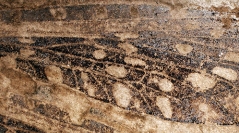

 Comptes Rendus Palevol
14 (8) - Pages 613-624
Comptes Rendus Palevol
14 (8) - Pages 613-624The first members of the Palaeozoic insect family Aykhalidae (Megasecoptera) to be described were discovered in Siberia. Two new genera and three species from the Early Pennsylvanian (Namurian) Tupo Formation at Xiaheyan in northern China (Ningxia Hui Autonomous Region) are described on the basis of the patterns of their wing venation. An emended diagnosis of the Aykhalidae is provided based on the larger sample of specimens now available. Sinopalaeopteryx gen. nov. is established with two described species (S. olivieri sp. nov. and S. splendens sp. nov.). Monotypic Namuroptera gen. nov. is established for N. minuta sp. nov., a species that is markedly smaller in size, has a pointed connection between MA and RP, and very long brace m-cua well aligned with a short rp-m brace compared to Aykhal and Sinopalaeopteryx. All these newly described taxa extend our knowledge of the morphological disparity within the Aykhalidae. Due to the number of shared characters in wing venation, we consider Aykhalidae to be closely related to Sphecopteridae, with a broad distribution across Euramerica, Siberia and North China. In addition, this study documents individual and intraspecific variability in wing venation in the Aykhalidae and Sphecopteridae.
Palaeoptera, Palaeodictyopteroida, Mischopterida, Aykhalidae, Gen. nov. et sp. nov., Carboniferous, Bashkirian